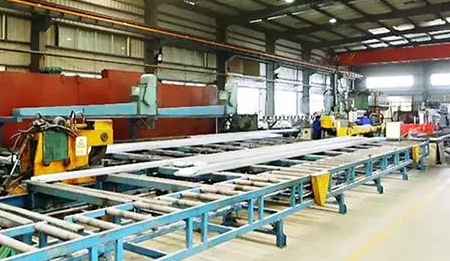Aluminum Extrusion Process for Radiator: Key Steps
Time:2023-10-17 14:47:00 Source:未知 Click:次
Introduction: In electronic devices, heat dissipation is a crucial issue. Aluminum extrusion, as a common solution for heat dissipation, plays a key role in its processing techniques to enhance thermal performance. This article will introduce several key steps in the aluminum extrusion process for radiators, helping readers understand how to optimize heat dissipation.
1. Material Selection:
Firstly, selecting suitable aluminum extrusion materials is the foundation of improving thermal performance. Commonly used aluminum alloys include 6063 and 6061, which have good thermal conductivity and machinability. When selecting materials, it is important to consider the operating temperature and heat dissipation requirements of the device to ensure material suitability.
2. Cutting and Forming:
Cutting and forming are essential steps in the aluminum extrusion process for radiators. Through cutting and forming processes, aluminum extrusions can be shaped and sized according to requirements. During cutting, attention should be paid to maintaining flatness and perpendicularity of the cut to ensure accuracy in subsequent processing. Forming processes can utilize methods such as extrusion, drawing, or casting, with appropriate choices based on product needs.
3. Surface Treatment:
Surface treatment of aluminum extrusions is crucial for enhancing thermal performance. Common surface treatment methods include anodizing, sandblasting, and electrophoretic coating. Anodizing increases the hardness and wear resistance of aluminum extrusions, improving their service life. Sandblasting improves surface roughness, increasing the heat transfer area and enhancing heat dissipation. Electrophoretic coating provides excellent corrosion protection, safeguarding the radiator from external environmental factors.
4. Radiator Fin Design:
The design of radiator fins also plays a significant role in improving thermal performance. The shape, size, and arrangement of fins affect heat dissipation efficiency. Generally, fins should maximize surface area to increase heat transfer area. Additionally, the arrangement of fins should distribute heat evenly to avoid hotspots and airflow blockages.
5. Assembly and Testing:
Finally, assembly and testing of the radiator are essential steps that should not be overlooked. During assembly, precise alignment of components is necessary to avoid air leaks or loose connections. In the testing phase, heat dissipation performance can be evaluated by measuring temperature changes of the radiator, and further optimization can be made based on test results.
Conclusion: Each step in the aluminum extrusion process for radiators significantly impacts thermal performance. By selecting suitable materials, optimizing cutting and forming processes, performing surface treatments, designing effective fin arrangements, and conducting assembly and testing, the thermal performance of radiators can be effectively enhanced, ensuring the proper functioning of electronic devices. It is hoped that this article provides helpful insights to readers and further promotes the application of heat dissipation technology.


